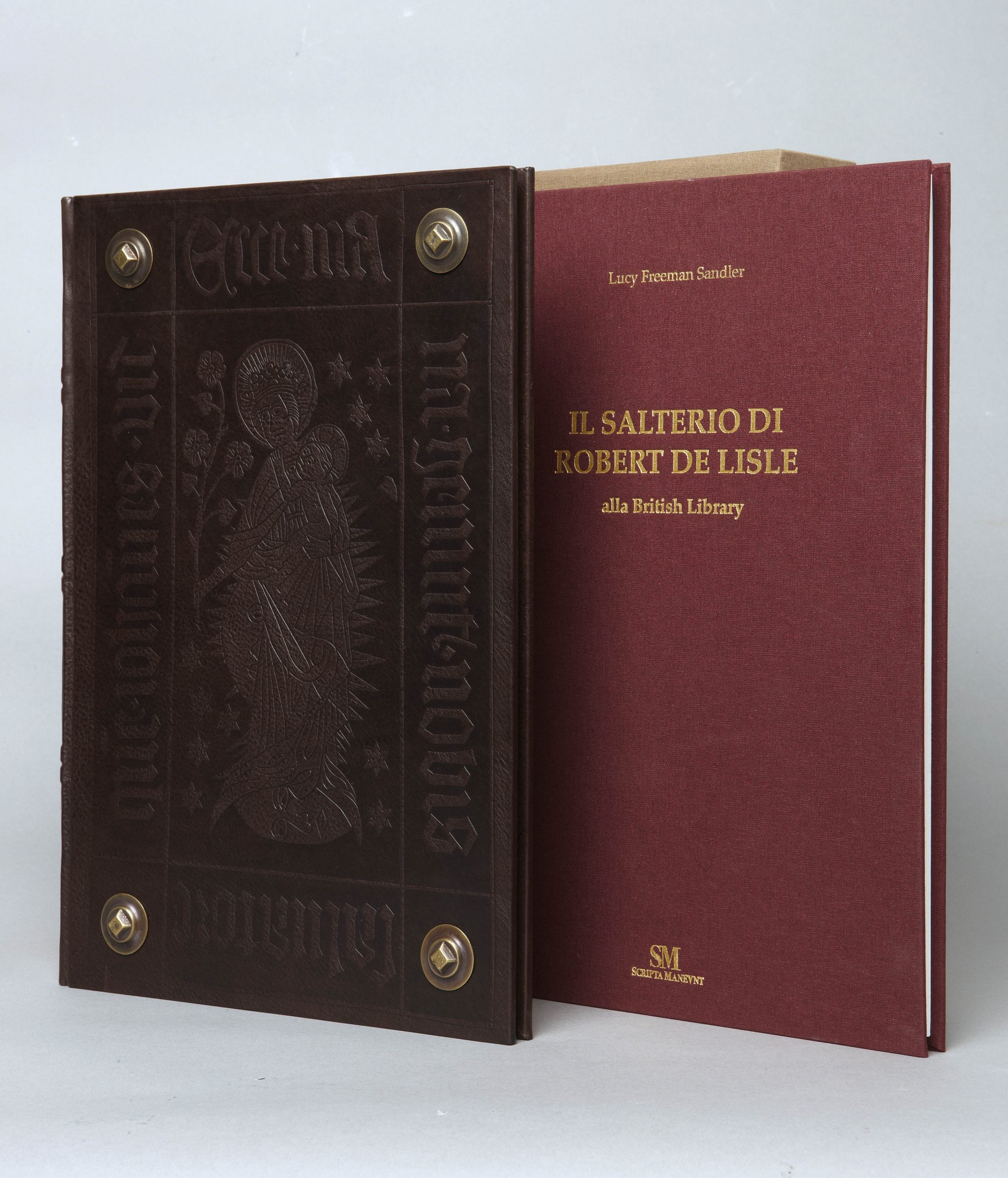The Psalter of Robert de Lisle
A MAGNIFICENT ITEM OF THE WORLD’S BIBLIOPHILE HERITAGE
The Psalter of Robert de Lisle is indeed a great monument to the European Gothic style and together with other highlights of the world’s cultural heritage such as the Lindisfarne Gospels, the Bedford Hours and the Golden Haggadah, counts as one of the finest manuscripts displayed in the British Library’s permanent exhibition at the Sir John Ritblat Gallery. Even completely uninformed visitors stop in amazement at the showcase containing this wonderfully illuminated manuscript of truly royal stature. The work is the perfect epitome of the English Gothic style and the characteristic longing for the skies has taken shape here in a way that is occasionally found in French or English architecture or in individual altarpieces, though only rarely in book painting.
The Psalter of Robert de Lisle (London, British Library, Arundel 83 II) comprises 38 pages illuminated throughout with 33 partly full-page single miniatures depicting biblical scenes, an interspersed Speculum Theologiae made up of 12 illustrated full-page theological charts, another schematic representation without figural decoration and a beautifully illuminated calendar at the beginning of the book. It has been suggested that this picture sequence was once the magnificent introduction for a Psalter whose textual pages have been lost or were perhaps never executed. Unfinished masterpiece or fragment?
This question will never be answered since the leaves have come down to us as singletons, rather than in the form of assembled quires. In the late 16th century, perhaps also in the early years of the 17th century, the
Book was bound with a Psalter that was bequeathed to the Royal Society in London in 1667. The British Museum purchased the manuscript in 1831, then titled Howard Psalter-Hours which, due to the integrated Psalter, counts today among the most valuable holdings of the British library.

ROBERT DE LISLE, A PATRON IN THE SERVICE OF TWO KINGS
Whether Robert de Lisle was the patron or only the first owner of the manuscript is unknown. What we do know is that the outstanding illustration programme was in line with his education and interests. The owner of a series of estates, the Baron Robert de Lisle had been active as Peer to Parliament from an early stage. The kings Edward II and Edward III appreciated his services until 1341, at which point in time he entered a Franciscan monastery in London as its foremost supporter.
In 1339 he bequeathed the De Lisle Psalter to his two daughters who had retired to the abbey of Cheqesaundes. The calendar contains an inscription written in his own hand, dated the 25th November: I Robert de Lyle give this book on this day |Novemer 25| in the year of our Lord 1339 to my daughter Audere with my blessing. And after her death to Alborou her sister and so from sister to sister as long as either lives. And afterwards it will remain forever with the ladies of Cheqesaundes. The manuscript’s artistic and theological value was so important to him that he preferred to leave it to a monastic institution to try to protect it from the rigour of a secular collection.
TWO OUTSTANDING UNIQUE ARTISTS
In European illumination of the 14th century, among other periods, it was usual to hire more than just one artist in addition to the scribe for the production of an illuminated manuscript. The same is true in our case, although one may be stunned to discover that the work of the fi rst master (named the Madonna Master after his main illustration in the manuscript) predates that of the Majesty Master by almost two decades. As harmonious as the 38-page sequence may seem, the two masters must have drawn upon very different sources.
The independent artistic development of Westminster is magnifi cently complemented by the immediate infl uence of Parisian art.
THE FACSIMILE EDITION OF THE DE LISLE PSALTER
After the signing of the exclusivity agreement with the British Library, it took three years of intensive work to complete the facsimile edition of Arundel 83 II, which is limited to 800 copies on a worldwide basis (350 being destined for the German-speaking countries alone).
The faithful reproduction of all 38 pages (19 leaves) in format 22.8 x 33.8 cm with 33 partly full-page single miniatures illustrating biblical events, 12 full-page illustrated theological diagrams, one schematic representation without fi gural decoration and a calendar, was carried out under the aegis of Müller & Schindler publishers. The gold chiselling has been rendered with a process specially developed for this purpose and all leaves have been trimmed according to the original and gilt-edged. The full-leather binding was modelled on the binding of Add. MS 18972 (Peter Comestor, Historia Scholastica, 1451) in the British Library.
The commentary volume accompanying the facsimile is authored by a respected expert specialising in medieval Psalters and English illumination, Mrs. Lucy Freeman Sandler (New York University), with reference to her earlier publications.


 No products in the cart.
No products in the cart. 
